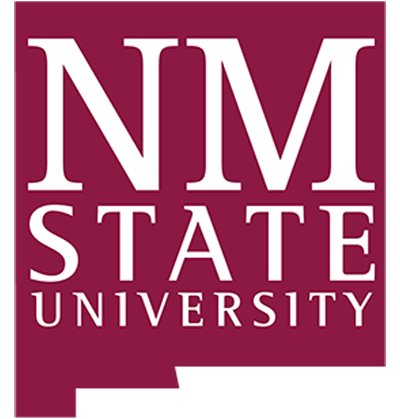1. Course number and name
CHME 441. Chemical Kinetics and Reactor Engineering
2. Credits and contact hours
3 credit hours = 45 contact hours per semester
3. Instructor’s or course coordinator’s name
Dr. David A. Rockstraw, Ph. D., P. E.
4. Text book, title, author, and year
- Elements of Chemical Reaction Engineering, 5/E by H. Scott Fogler
ISBN-13: 978-0133887518 • ISBN-10: 0133887510; Prentice Hall (2016)
5. Specific course information
a. catalog description: Analysis and interpretation of kinetic data and catalytic phenomena. Applied reaction kinetics; ideal reactor modeling; non-ideal flow models. Mass transfer accompanied by chemical reaction. Application of basic engineering principles to design, operation, and analysis of industrial reactors.
b. prerequisites: CHEM 313, CHME 302 and CHME 306 co-requisites: CHME 307
c. required, elective, or selected elective (as per Table 5-1): Required
6. Specific goals for the course
a. The student will be able to…
- define the rate of chemical reaction, conversion, and space time;
- write mole balances in terms of conversion for a batch reactor, CSTR, PFR, and PBR;
- determine reactor sizes (volume, catalyst weight) for reactors either alone or in series once given the molar flow rate of A and the rate of reaction, – rA, as a function of conversion, X;
- write the relationship between the relative rates of reaction;
- write a rate law and define reaction order and activation energy;
- define the Arrhenius Equation and describe how rate of reaction varies with temperature;
- describe homogeneous, heterogeneous, elementary, nonelementary and reversible reactions;
- express species concentration as a function of conversion for liquid and gas phase reactions;
- express the volumetric flow rate for a gas phase reaction as a function of conversion;
- express the rate of reaction as a function of conversion for any given rate law;
- account for effect of pressure drop on conversion in packed bed reactors;
- size batch reactors, semibatch reactors, CSTRs, PFRs, PBRs, membrane reactors, and microreactors for isothermal operation given the rate law and feed conditions;
- determine the reaction order and specific reaction rate from experimental data;
- describe how the methods of half lives, and of initial rate, are used to analyze rate data;
- choose the appropriate reactor and reaction system that would maximize the selectivity of the desired product given the rate laws for all the reactions occurring in the system;
- size reactors to maximize selectivity and to determine the species concentrations in a batch reactor, a semibatch reactor, a CSTR, a PFR, and a PBR, in systems with multiple reactions;
- discuss pseudo-steady-state-hypothesis and how it is used;
- explain what an enzyme is and how it acts as a catalyst;
- describe Michaelis-Menten enzyme kinetics and rate law with its temperature dependence;
- discuss how to distinguish the different types of enzyme inhibition;
- discuss the stages of cell growth and the rate laws used to describe growth;
- write material balances on cells, substrates, and products in bioreactors to size chemostats and plot concentration-time trajectories in batch reactors;
- define a catalyst, a catalytic mechanism and a rate limit step;
- describe the steps in a catalytic mechanism and how one goes about deriving a rate law and a mechanism and rate limiting step consistent with the experimental data;
- size isothermal reactors for reactions with Langmuir-Hinshelwood kinetics;
- discuss the different types of catalyst deactivation and the reactor types and describe schemes that can help offset the deactivation;
- describe the steps in Chemical Vapor Deposition(CVD);
- size adiabatic CSTRs, PFRs, and PBRs;
- use reactor staging to obtain high conversions for highly exothermic reversible reactions;
- size nonadiabatic CSTRs, PFRs, and PBRs;
- carry out an analysis to determine the Multiple Steady States (MSS) in a CSTR along with the ignition and extinction temperatures;
- analyze multiple reactions carried out in CSTRs, PFRs, and PBRs which are not operated isothermally in order to determine the concentrations and temperature as a function of position (PFR/PBR) and operating variables;
- analyze batch reactors and semibatch not operated isothermally;
- analyze perturbations in temperature and presence for CSTRs being operated at steady state and describe under what conditions the reactors can be unsafe (safety);
- analyze multiple reactions in batch and semibatch reactors not operated isothermally;
- define a residence time distribution (RTD) [E(t), F(t)] and the mean residence time;
- determine E(t) form tracer data;
- write the RTD functions (E(t), F(t), I(t)) for ideal CSTRs, PFRs, and laminar flow reactors;
- describe the tanks-in-series and dispersion one parameter models;
- describe how to obtain the mean residence time and variance to calculate the number of tanks-in-series and the Peclet number;
- calculate Peclet numbers and dispersion coefficients using correlations and RTD data; and
- calculate conversion for a first order reaction in a tubular reactor with dispersion.
b. Criterion 3 Student Outcomes specifically addressed by this course are found in a mapping of outcomes against all CHME courses in the curriculum.
7. Brief list of topics to be covered
- mole balances
- conversion
- reactor sizing
- rate laws
- reacting system stoichiometry
- isothermal reactor design
- collection and analysis of rate data
- systems involving multiple reactions
- non-ideal reaction mechanisms
- bioreactions and bioreactors
- steady-state nonisothermal reactor design
- unsteady state nonisothermal reactor design
- catalysis and catalytic reactors
- distributions of residence times for chemical reactors
- models for nonideal reactors
Common Syllabus Addendum
The NMSU Department of Chemical Engineering maintains a syllabus addendum containing course requirements common to all courses with the CH E prefix online. This document is accessible from the URL: http://chme.nmsu.edu/academics/syllabi/chme-common-syllabus-addendum/


